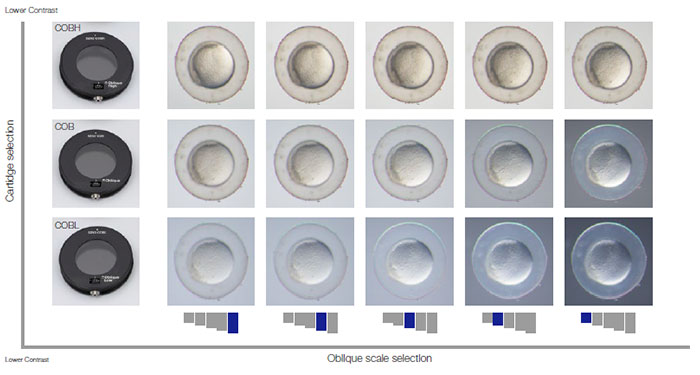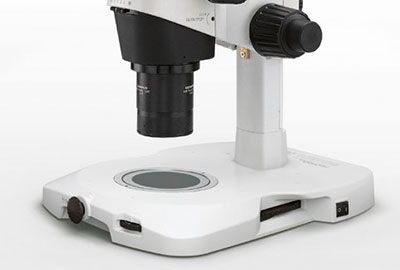Optimizing Your Oblique Observation Using Our Flexible Contrast Solution
Contrast Optimization When Using Stereo Microscopes
Optical microscopes are typically adjusted for Köhler illumination, which helps ensure even illumination of samples. However, it is difficult to apply Köhler illumination to stereo microscopes because of the stereoscopic viewing, low magnification, zoom functionality, and the wide variety of samples. Instead, oblique illumination is used with stereo microscopes as an optimized illumination method.
Challenges of the Oblique Illumination Technique
When oblique illumination is used, the observation image is affected by the (1) shadow strength (contrast level) and (2) the angle and size of the shadow. However, conventional oblique mechanisms do not allow independent adjustment of the shadow strength and the angle and
size of the shadow while maintaining even illumination for all magnifications.
Olympus’ Solution Using a LED Transmitted Light Illumination Base with Flexible Contrast Functionality
To solve this issue, Olympus developed new a contrast method using the SZX2-ILLTQ quad position LED transmitted light illumination base. This new LED illumination base enables you to optimize your observation by adjusting the contrast level and the angle and size
of the light/shadow (oblique) independently.
The solution involves a simple two step procedure:
First, you can choose between three cartridges to set the contrast level (low/standard/high). The vertical columns in Figure 1 show that the contrast increases (bottom to top) depending on the selected cartridge: COBL→COB→COBH.
Second, you can also change the angle and size of the light/shadow with 5 levels by changing oblique scales on the cartridge. The horizontal images in Figure 1 (left to right) show how this adjustment changes the light/shadow position in accordance with the oblique scale selection.

Figure 1: How the view changes depend on the difference of cartridge and oblique scale selection.
Conclusion
As demonstrated, the Olympus SZX2-ILLTQ quad position LED illumination base enables fine contrast adjustments, which can help make your oblique observation using a stereo microscope more flexible and efficient. |  |
이 애플리케이션에 사용되는 제품
Maximum Compare Limit of 5 Items
Please adjust your selection to be no more than 5 items to compare at once
Not Available in Your Country
Sorry, this page is not
available in your country.